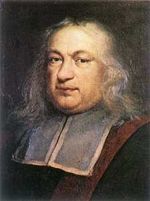 As my blogger profile shows, reading is one of my "other interests" (I have many, the profile only shows a subset).
As my blogger profile shows, reading is one of my "other interests" (I have many, the profile only shows a subset).If you chose to look back through some of the past posts on this blog, you will note that not one of them is with regards to reading. I feel that this oversight needs to be corrected.
Generally, I have two or three books on the go at any given moment with another one or two waiting in the wings. My current book list is as follows:
- The Art of Computer Programming, by Donald Knuth
- The Annotated Sherlock Holmes, by Sir Author Connan Doyle
- Head First Design Patterns, by a whole slew of different authors
I could go through and review each of these books, but I suspect that such a diatribe would bore you to tears. Instead, let me make a few comments about the first book in the list.
This book (actually 3, with several more in the works) was originally published in the 1960s and is still considered the bible of computer science. It has received some criticism for Dr. Knuth's choice of language for example algorithms (assembler, for a fictitious computer...), but it has stood the test of time and people continue to cite it.
When I read it, I feel very dumb.
To give you an idea of the tone of the book, let me give you a sample exercise from the preface.
4. [HM45] Prove that when n is an integer, n > 2, the equation x^n + y^n = z^n has no solution in positive integers x,y,z.
The ^ denotes exponent. So the equation reads "x raised to the power of n plus y raised to the power of n equals z raised to the power of n". The HM45 indicates that the problem is solvable, but will require "higher mathematics" beyond simple calculus. It may just take you the rest of your life.
So, exercise number four of this book is Fermat's Last Theorem, a problem that was posed in 1637 and was not solved until 1995. More than one extremely brilliant and educated research mathematician has dedicated his entire career to this one problem without seeing it solved.
I chose to skip the exercise and begin reading Chapter One.

No comments:
Post a Comment